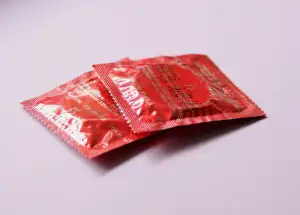Kybella Treatment Gone Wrong: Unveiling the Adverse Effects on Health

- Explanation of potential side effects and risks associated with Kybella
- Instances of adverse effects from Kybella treatment
- Case study 1: Severe swelling and bruising after Kybella injections
- Case study 2: Nerve damage and numbness following Kybella treatment
- Case study 3: Skin irregularities and scarring caused by Kybella injections
- Discussion on the importance of choosing a qualified and experienced practitioner for Kybella treatment
- Tips for minimizing the risk of adverse effects from Kybella
Kybella treatment, also known as deoxycholic acid injection, is a non-surgical procedure used to reduce submental fat, commonly referred to as a double chin. It gained popularity due to its ability to contour and redefine the jawline without invasive surgery. The purpose of Kybella is to dissolve fat cells in the targeted area, resulting in a more defined and youthful appearance. This FDA-approved treatment offers a non-invasive alternative for individuals seeking to improve their facial profile and boost their self-confidence. However, it is essential to be aware of the potential side effects and risks associated with this procedure before considering it as an option.
Explanation of potential side effects and risks associated with Kybella
Kybella, a popular treatment for submental fat reduction, comes with potential side effects and risks. The most common side effects include swelling, bruising, pain, numbness, and redness at the injection site. In some cases, more serious complications may occur such as difficulty swallowing or nerve damage. It is crucial to be aware of these risks before considering Kybella treatment. Always consult with a qualified healthcare professional to discuss the potential side effects and determine if this treatment is suitable for you.
Instances of adverse effects from Kybella treatment
Instances of adverse effects from Kybella treatment have been reported, highlighting the potential risks associated with this procedure. Patients have experienced severe swelling and bruising after receiving Kybella injections, which can last for several weeks and cause discomfort. Additionally, nerve damage and numbness have been observed as a result of the treatment, leading to prolonged or permanent loss of sensation in the treated area. Furthermore, some individuals have developed skin irregularities and scarring due to the injections, affecting their overall appearance. These cases serve as a reminder that Kybella treatment is not without its risks and should be approached with caution.
Case study 1: Severe swelling and bruising after Kybella injections
In one case study, a patient experienced severe swelling and bruising after receiving Kybella injections. The individual had opted for the treatment to reduce submental fat under the chin. However, within hours of the procedure, their chin became significantly swollen and discolored. The swelling lasted for several weeks, causing discomfort and affecting their daily activities. Despite following post-treatment care instructions, the bruising took a considerable amount of time to fade away completely. This instance highlights the potential risk of adverse effects associated with Kybella treatment.
Case study 2: Nerve damage and numbness following Kybella treatment
In a recent case, a patient experienced nerve damage and numbness after undergoing Kybella treatment. The patient reported a tingling sensation and loss of feeling in the treated area, which persisted for several weeks. Further examination revealed that the injection had inadvertently damaged nearby nerves.
Nerve damage is one of the potential risks associated with Kybella treatment. The injections contain deoxycholic acid, which works by destroying fat cells. However, if not administered properly, it can also affect surrounding tissues, including nerves.
Numbness is a common symptom of nerve damage and can significantly impact daily life. It may hinder facial expressions, cause difficulty in speaking or eating, and affect overall sensory perception in the treated area.
While nerve damage and numbness are rare side effects of Kybella treatment, this case highlights the importance of choosing a qualified and experienced practitioner. A skilled professional will have a thorough understanding of facial anatomy and will take necessary precautions to minimize the risk of complications.
Patients considering Kybella treatment should thoroughly research their chosen practitioner's qualifications and experience. They should inquire about their track record with previous patients and ask for before-and-after photos to assess their expertise.
Additionally, it is crucial to have an open discussion with the practitioner about any pre-existing medical conditions or medications that could increase the risk of adverse effects. This information will help determine if Kybella treatment is suitable for an individual or if alternative options should be explored.
By selecting a knowledgeable practitioner who follows proper injection techniques, patients can reduce the likelihood of experiencing nerve damage or numbness as a result of Kybella treatment.
Case study 3: Skin irregularities and scarring caused by Kybella injections
In some cases, Kybella treatment has been associated with skin irregularities and scarring. One such instance involved a patient who developed uneven texture and pigmentation changes on the treated area after receiving Kybella injections. The patient experienced significant distress due to the visible scarring, which required additional treatments to minimize its appearance.
Skin irregularities can occur when the fat-dissolving solution is injected too superficially or in excessive amounts. This can lead to damage to the surrounding tissues, resulting in uneven skin texture and discoloration. In severe cases, it may require surgical intervention or laser treatments to correct the scarring.
It is crucial for patients considering Kybella treatment to be aware of these potential risks and discuss them thoroughly with a qualified practitioner before proceeding. Choosing an experienced professional who understands proper injection techniques and has a comprehensive understanding of facial anatomy can greatly reduce the risk of adverse effects like skin irregularities and scarring.
Patients should also ensure that they follow all post-treatment instructions provided by their practitioner, including avoiding excessive sun exposure and using appropriate skincare products. By taking these precautions, individuals can minimize the likelihood of developing skin irregularities and scarring after Kybella injections.
While Kybella treatment offers a non-surgical option for reducing submental fat, it is essential to weigh the potential risks against the desired results. Consulting with a knowledgeable practitioner and being well-informed about possible adverse effects will empower individuals to make an informed decision regarding their aesthetic goals.
Discussion on the importance of choosing a qualified and experienced practitioner for Kybella treatment
Choosing a qualified and experienced practitioner for Kybella treatment is of utmost importance. The procedure involves injecting a substance into the body, which requires precision and expertise. A skilled practitioner will have thorough knowledge of facial anatomy and understand the potential risks involved. They will also be able to assess the patient's suitability for the treatment and determine the appropriate dosage. By selecting a reputable professional, patients can minimize the risk of adverse effects and ensure their safety throughout the process.
Tips for minimizing the risk of adverse effects from Kybella
1. Choose a qualified and experienced practitioner: Ensure that your Kybella treatment is performed by a licensed medical professional who has received proper training in administering the injections.
2. Research the practitioner's track record: Look for reviews and testimonials from previous patients to gauge their satisfaction and any potential complications they may have experienced.
3. Ask questions during the consultation: Seek clarification on the procedure, potential side effects, and any pre-existing conditions or medications that may increase your risk of complications.
4. Follow pre-treatment instructions: Your practitioner will provide specific guidelines to prepare for the treatment, such as avoiding blood-thinning medications or supplements.
5. Disclose your medical history: Inform your practitioner about any allergies, previous cosmetic procedures, or medical conditions you have to ensure they can tailor the treatment accordingly.
6. Understand realistic expectations: Have a thorough discussion with your practitioner about what results you can expect from Kybella treatment and any potential risks involved.
7. Follow post-treatment care instructions: Adhere to the aftercare guidelines provided by your practitioner, including avoiding excessive sun exposure, applying ice packs if recommended, and refraining from strenuous activities.
Remember, while these tips can help minimize risks, it's essential to consult with a qualified professional to determine if Kybella treatment is suitable for you based on your individual circumstances.
While Kybella treatment offers a non-surgical solution for reducing submental fat, it is crucial to consider the potential risks and adverse effects associated with this procedure. The cases discussed highlight severe swelling, bruising, nerve damage, numbness, skin irregularities, and scarring as possible outcomes.
Choosing a qualified and experienced practitioner is of utmost importance to minimize the risk of these adverse effects. Thoroughly research the credentials and track record of any professional before undergoing Kybella treatment.
To further reduce the likelihood of complications, follow these tips: consult with a healthcare professional to determine if you are an ideal candidate for Kybella, disclose any medical conditions or medications that may interfere with the treatment, closely adhere to post-treatment care instructions provided by your practitioner.
Ultimately, it is essential to weigh the potential benefits against the risks involved in Kybella treatment. Make an informed decision after considering all aspects and consulting with trusted healthcare professionals.
Published: 22. 02. 2024
Category: Health



